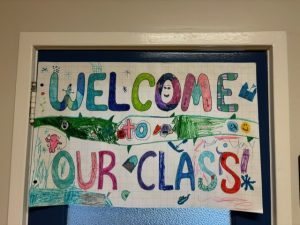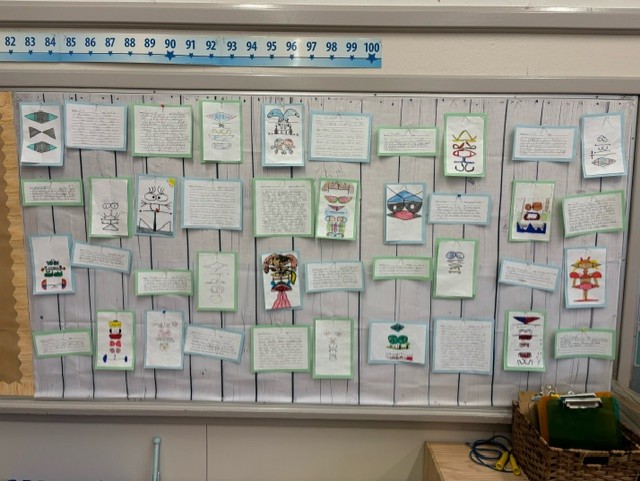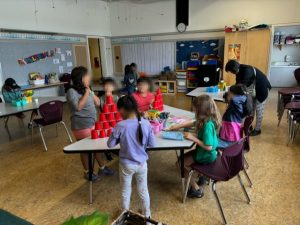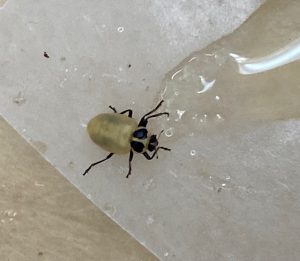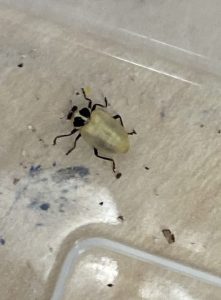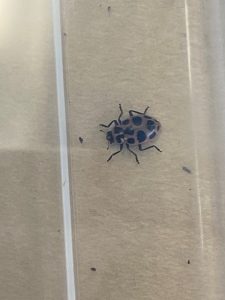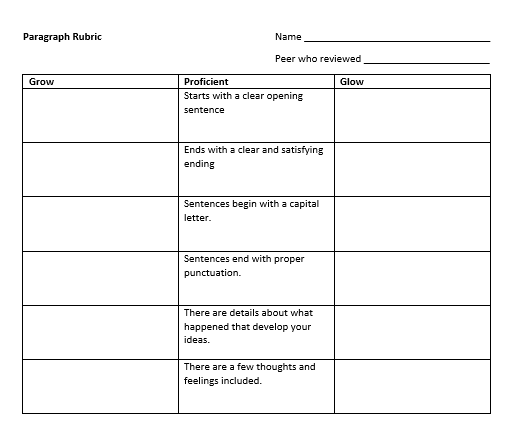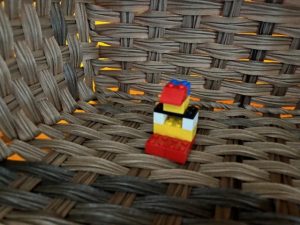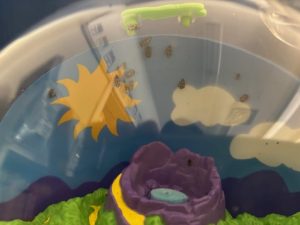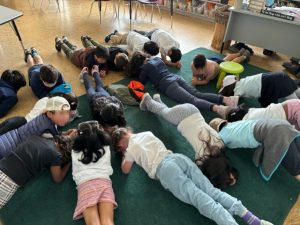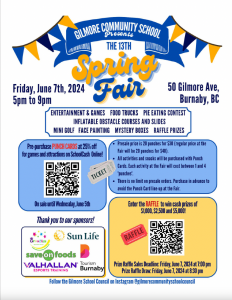Week 3 – Learning Through Identity, Curiosity, and Reflection: A Peek Inside Division 11
Our hearts were warmed by your presence at our Families as Partners conversations last week. We thoroughly enjoyed meeting you in person and learning more about your child through your stories. Thank you for your investment of time to share as we journey and work alongside each other this year.
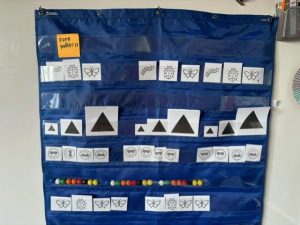 Patterns
Patterns
In Math, we continued to learn about different varieties of patterns. For example, a pattern can be different by shape, colour, size, and rotation. We started our Patterns booklet where we got to create our own book cover and demonstrate our understanding of repeating patterns including identifying the core pattern. Next steps: Learn how to identify, create, continue, and describe increasing patterns.
Way to support at home: When you are outside, look for patterns in nature. At home, take out items to create varying patterns that change by shape, colour, size or rotation.
One of our core competencies is personal awareness and identity.

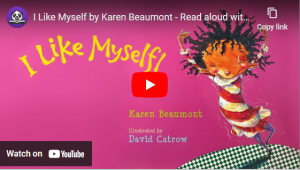 We read a story called I Like Myself! by Karen Beaumont. Watch the animated video on YouTube of the story. The goal of reading this story was to critically think about our strengths, core values, and character traits we appreciate about ourselves. This isn’t an easy task even for some adults! Students had an opportunity to respond to this story by writing about what they like about themselves.
We read a story called I Like Myself! by Karen Beaumont. Watch the animated video on YouTube of the story. The goal of reading this story was to critically think about our strengths, core values, and character traits we appreciate about ourselves. This isn’t an easy task even for some adults! Students had an opportunity to respond to this story by writing about what they like about themselves.
Learning requires exploration of one‘s identity. – First Peoples Principals of Learning
This principle reflects the importance of identity in relation to learning. Identity is what connects people to each other, to communities, and to the land. The exploration of one’s identity includes developing an understanding of one’s place in the world, in addition to being able to identify all the factors that contribute to how people see themselves. These factors include their strengths and their challenges, their innate abilities (gifts) and capacities to learn. In addition to using this understanding to help one grow in life, knowing one’s own strengths and challenges is a part of the responsibility a person has to his or her family and community, as a people are considered to have a duty to use them to contribute to others (family, community, and land). Taken from https://firstpeoplesprinciplesoflearning.wordpress.com/learning-requires-exploration-of-ones-identity/
We are each unique and beautiful but together we are a masterpiece!
Ways to support learning at home: Have a conversation about what they wrote in their writing books. Help them extend understanding of themselves by helping them see some of the positive characteristics they have. Support them in seeing the examples (or receipts in their lives) that demonstrate these positive traits that you see. Developing a positive self image through awareness of strengths and core values is one of the first steps in building a strong foundational relationship with themselves. When they know who they are, what they stand for, and what brings them joy, then they can anchor into these when faced with adversity or challenges. If you were to model this, what would you say to your child?
We are scientists.
Big idea: All matter is made of particles.
- matter is anything that has mass and takes up space
- atoms are building blocks of matter
- Life Science: The study of living organisms, including biology, botany, zoology, and ecology.
- Chemistry: The study of the composition, structure, properties, and changes of matter.
- Physics: The study of matter, energy, and the fundamental forces of nature.
You may have seen a yellow sticky note come home in their planner with the word “matter” written on it. We went around the room and in the hallways to “label” everything we saw as matter to demonstrate our understanding that matter is anything that has mass and takes up space. They were asked to tell you what we did with the sticky note and show you examples of matter in your home.
We also talked about atoms. Their minds were blown away when they learned how many atoms are on the top of a pinhead!
Orange Shirt Day
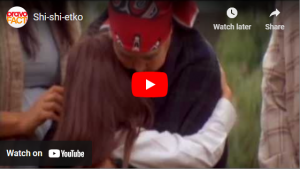
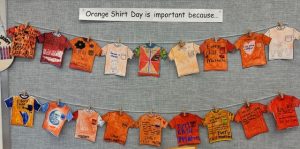 During our Orange Shirt Day assembly on Friday, we learned about why we wear orange shirts. Why? An orange shirt was taken away from a residential school Survivor: Phyllis Webstad. This day raises awareness of the residential school system in Canada. Wearing orange reminds us of the impact of residential schools still felt today. We also went for a short walk around the school.
During our Orange Shirt Day assembly on Friday, we learned about why we wear orange shirts. Why? An orange shirt was taken away from a residential school Survivor: Phyllis Webstad. This day raises awareness of the residential school system in Canada. Wearing orange reminds us of the impact of residential schools still felt today. We also went for a short walk around the school.
On Monday, September 30, the school will not be in session for National Day for Truth & Reconciliation. This is an important day of reflection to honour Survivors, families, communities, and remember the ancestors that never made it home. For me as a mother, I can’t help but feel emotional when I think about children being separated from their families. Some children may have emotions about this too when they try to empathize. Please have a conversation to help them understand our history and why National Day for Truth & Reconciliation is an important day. Thank you.
Ways to support at home: Please feel free to visit the National Centre for Truth and Reconciliation website to continue the learning and reflection at home. Feel free to watch the video we also watched at our assembly.
Scholastic Book Orders
One of the ways we have built up our classroom library is through the Scholastic Reading Club. The books in these flyers are generally wonderful and are very reasonable. Teachers are awarded points to use toward books and classroom supplies when students place orders. We will be sending home flyers regularly. Learn more.
Our class code: RC235868
Some of our class books were donated by previous students. This is so appreciated! If you have books at home that your child is no longer interested in, please consider donating them to the classroom. Children need an interesting variety of books to be motivated to read and we do a lot of reading! If we cannot use them, we know many new teachers who can. Any unwanted craft supplies, puzzles, or games are also greatly appreciated.
Thank you for your support at home. If you returned the student information forms that went home last week, thank you! If you have not yet, then please return this week.
Looking forward to another great week at school!
With gratitude, Ms. Chan
A message from Ms. Kim
This week in art, our students learned about the artist Keith Haring. We explored the concept of pop art and discussed his unique style. Next week, the students will create Keith Haring-inspired family portraits and learn about complementary colors through his artwork.
We spent a significant amount of time in class discussing Orange Shirt Day and the importance of this day. This year, the National Day of Truth and Reconciliation event will be taking place on Sunday, September 29th, 2024 at Memorial Peace Park in Maple Ridge, beginning at 10am until 3pm. This will be a good opportunity for students to learn more about the significance behind this day.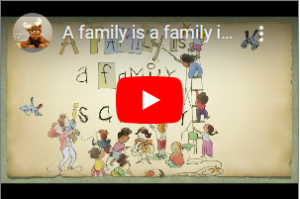
In math, we are continuing our work on data analysis. The students have been developing their own survey questions to gather and display data.
In Social Studies, we read a wonderful book called A Family is a Family is a Family by Sara O’Leary. This book celebrates all types of families, and we will continue our conversation about families into next week, eventually exploring family traditions from around the world.
As always, I am thankful for your support in your child’s learning journey.
Kindly, Ms. Kim
Dates to Note:
- Wednesday, October 2: Picture Day
- Friday, October 5: Painting our fish for Stream of Dreams; send children with clothing appropriate for painting just in case. I am not sure if the paint is washable. These fish will replaced the ones currently on the fence along Gilmore Ave.
- Every Friday: Conversation Circles for English Language Learners newer to Canada. Come practice your speaking and make new connections at school!
- PAC fundraiser: Apples! Last day to order is October 9.
- Friday, October 18: Family movie night. Save the date!
This was our writing and art about our names! Look at all of the cool designs we made with our names!
